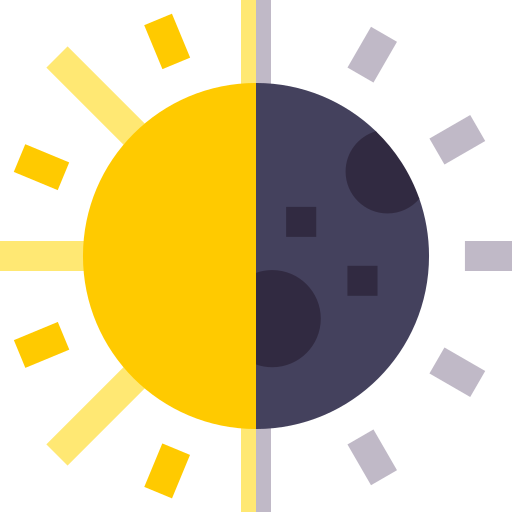The 2021 Swiss Smash Power Ranking Explained
Introductory Comments:
Before anything else, I want to stress that while the panel did its best to represent players and their performances during 2021, it was also a difficult period for making an accurate PR. This is not because of a lack of tournaments, but because many of the tournaments were comparatively smaller, with a few large events, like “Smash in Tuilière”. Smaller events mean that they remained primarily locally focused, so the data to compare different regions remained more limited than in previous years. That being said, 2021 was the year with the most Romandie tournaments (at least relatively speaking) and the largest Romandie participation in Ultimate, which is nice to see. Many players attended fewer events than normal (even when compared to 2020), which made it more difficult to assess individual ranks. This is the primary reason why the 2021 PR only consists of 10 players instead of 15, as it would have been extremely difficult to accurately rank more players. Instead, we added Honorable Mentions (arguably more than you would expect), to honor a few more outstanding performances. Finally, you might be surprised by the small size of our panel. We asked for additional members on the panel, but nobody else actively participated so we ended up with just the two of us. That being said, we would still appreciate additional members on the panel!
I want to thank Wave(s) (@wavesSSB) for pushing the idea for a Swiss PR, his input, and co-creating the PR as well as Berb (@berbdraws) for designing and drawing the amazing PR Graphic!
The Philosophy behind a Power Ranking:
I want to start by asking a question: What is the goal of a Power Ranking? Instinctively most people will answer that the goal of a PR should be to measure who the strongest players in a region are. While I would generally agree with this statement, there are nuances to it. A lot of people associate player strength (or "power", as in "Power Ranking") with "skill". What is skill? A general definition would be your ability to play the game. But what does that really mean? I would argue that in any group of 5 people you will not come to a definitive agreement of what makes a player truly skillful, or "good" at Smash. There are many factors to consider, and everybody prioritizes them differently. Is it their ability to play their character (neutral, advantage, disadvantage, etc.), their understanding of matchups, how "clutch" they are in situations where they are behind or when both players only need one final hit? Is it their consistency or their peaks, where they take sets off of players generally considered better than them? All these discussions make it extremely difficult to create a PR which everyone, or even a majority, agrees with. There might be some obvious "skill gaps" between players that almost everybody agrees on, but there are certainly players where the opinions would vary considerably.
In my opinion the Swiss Smash PR should primarily honor the player performances at all Swiss tournaments in a certain timeframe. This definition has its basis in numbers, so it becomes measurable and removes many of the discussions described above. Measuring player performances is also considerably easier than measuring some vague and highly debated concept of "skill" or "strength". But, despite almost exclusively basing a PR on objective numbers, the evaluation of said numbers is once again subjective, because somebody has to assign value to each of these numbers and this is done through their personal opinion and biases. In the following I would like to explain the thought process which led to the 2021 Swiss Smash PR (and potentially more in the future).
Methodology:
At its core the 2021 Swiss Smash PR is made up of the results provided by the Wave(s) Power Ranking, which is based on a TrueSkill Algorithm, and my (Lyamarth) own algorithm that was specifically created for this purpose. We then discussed the results of both algorithms with the addition of head-to-head records between players to adjust placements whenever players were really close to each other.
The Wave(s) TrueSkill Ranking:A TrueSkill algorithm ranks players according to their perceived skill and a degree of uncertainty in their skill-level to allow for adjustments. Originally created for online matchmaking it is also regularly used in Smash. While the algorithm was originally created for an infinite number of wins and losses, Smash tournaments only allow for 2 losses per tournament, with a much larger number of wins. This generally inflates the score ranking, making it value “good” wins more than “bad” losses, especially because at least for the players considered around PR-level these losses are typically players that also had their score inflated. Nonetheless, the TrueSkill algorithm can still somewhat accurately represent the players in contention for the PR ranking, but will typically overrate inconsistent players, who were able to get very good wins. Anybody interested in how the TrueSkill Algorithm works can read more about it here from Microsoft, or in a scientific paper. There is also a more accessible explanation.
The Lyamarth PR Algorithm:The Lyamarth PR Algorithm can be split into two parts. In a first iteration player results are looked into, and a value is assigned for the “average performance” over all tournaments they entered. Because there are many players who only attend a few events a logarithmic confidence value is added into the calculation, to account for potential inaccuracies. There is only so much you can say about a player who entered only one tournament. Was this representative of his “normal” performance or did he perform exceptionally well/poor? One argument (that also frequently comes up in Switzerland) is that this system could be abused by players farming “easy” tournaments to inflate their score.
This is counteracted in a second step by another variable: the “difficulty” of a tournament. Some tournaments have a lot of attendees but are considerably easier to win than smaller more “stacked” events. Examples for these are typically tournaments at conventions, for example the “HardRead@Herofest” and “E-Grottes Games 2021”, while “Saint Smash COVID Edition” was a small, but very stacked tournament. The “difficulty” value is based on the accumulated performance values of all players that entered. This means that if a player is always getting first in his region, but whenever he travels outside of his region, he places outside of the Top8, his overall score will be much lower compared to the players consistently making Top8 at these superregional events, and this in turn also reduces the scores of all players that he regularly beats in his own region (unless they also travel).
Unsurprisingly, both algorithms end up with the same people placing high in the ranks, albeit with some differences in placings. A list of the roughly 30 best performing players was chosen and the head-to-head records between them gathered, as well as any wins/losses against foreign invaders and losses to players outside of these Top30. When discussing the results of both algorithms these head-to-head records would tip the scale in favor of one player over the other if they were considerably close to each other in terms of results and scores. The focus was put on the actual numbers and less the perceived “strength” (or “potential”) of a player in general.
List of counted tournaments:
The 2021 PR follows the criteria established by the previous rankings:- At least 16 entrants
- Announced 2 weeks before the event on SwissSmash.ch or the Swiss Smash Discord
- Held on a weekend
- Good infrastructure (sufficient setups etc.)
- No invitational events (invitational events are only counted for head-to-head records)
- No weekly tournaments
- No bad seeding
The majority of tournaments (13) were cut due to being below 16 entrants. The Lyamarth Algorithm was run once with all of them included and once without them, and their inclusion/exclusion had almost no impact on the results. Fortunately, no tournaments had to be cut due to bad infrastructure or bad seeding. The BDS Invitational towards the end of the year was only counted towards head-to-head records. Counting it as a regular tournament would have likely changed some of the standings, but we decided to follow the criteria of previous PR seasons. The following remaining tournaments were counted towards the PR:
- Numerik Games 2021 (April 24)- Frismash Garage #10 (June 5)
- Full House #1 (June 12)
- Saint Smash COVID Edition (June 26)
- Super Smash Qwertz #6 (June 26)
- PK Bern Erupted #1 (June 27)
- Smash Hunters (July 3)
- Frismash Garage #12 (August 7)
- PK Bern Erupted #2 (August 8)
- Orcus Smash #5 (August 21)
- GYAH – Get your ass here (August 22)
- Smash Hammered #1 (September 11)
- Super Smash Qwertz #7 (September 11)
- E-Grottes Games 2021 (September 18)
- PK Bern Erupted #3 (September 19)
- Smash in Tuilière (October 2)
- Hardread@Herofest (October 3)
- Smash Hammered #2 (October 16)
- Smash’N’Reset (October 17)
- Smash Club #1 (October 30)
- PK Bern Erupted #4 (October 31)
- Full House #2 (November 6)
- Orcus Smash #6 (November 13)
- Smash Club #2 (November 14)
- Smash Hammered #3 (November 27)
- University of Smash (December 4)
- PK Bern Erupted #5 (December 4)
- Smash Hammered #4 (December 18)
Created at:
12.03.22 (11:56)
Created by:
Lyamarth















